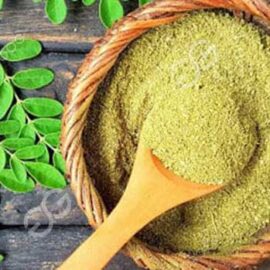Moringa leaves have attracted much attention due to their high nutritional value and wide range of uses (such as health products and food additives). In factory production, drying is a key link that directly affects product quality and shelf life. The following are scientific and efficient drying methods and operating points.
- Selection of drying methods
Common drying technologies in factories include dehydrator drying, solar drying and mechanical drying.
Dehydrator drying: By controlling temperature (50-55°C) and humidity, uniform drying is achieved, which is suitable for large-scale production. Studies have shown that this method can reduce the moisture content of Moringa leaves from 77.98% to 5.53% with minimal nutrient loss.
Solar drying: Low cost and environmentally friendly, but greatly affected by weather, needs to be operated on sunny days, and is prone to nutrient loss.
Mechanical drying: Use hot air equipment (such as ovens) for drying, and the temperature must be strictly controlled at 50-55°C to avoid high temperature charring.
- Key operating parameters
Temperature control: All methods need to maintain a temperature between 50-55°C. Too high a temperature (e.g. >55°C) will cause the leaves to turn brown and destroy the nutrients.
Time management: Dehydrator drying usually takes 2-4 hours, while solar drying takes 2-7 days, which needs to be adjusted according to humidity.
Moisture detection: The moisture content needs to be tested after drying. It is recommended to use a 50°C oven to dry for 30 minutes to ensure that the moisture content is less than 7.5%.
- Post-drying treatment
Grinding and sieving: The dried Moringa leaves need to be crushed by a stainless steel hammer mill and then graded by a sieve (coarse powder 1.0-1.5mm, fine powder 0.5-1.0mm).
Packaging and storage: Use sealed, dry containers to avoid moisture. It is recommended to mark the production date, batch and nutritional information to extend the shelf life.
In the factory, moringa leaf drying machine drying is the best choice for both efficiency and nutrient retention. The quality of Moringa leaves can be maximized by precisely controlling temperature, time and subsequent processing. Regardless of the method used, scientific operation and strict monitoring are the keys to success.



